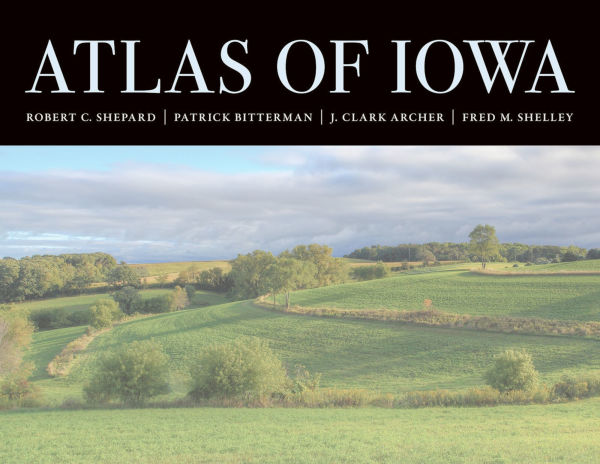From Iowa Territory’s nail-bitingly close referenda for statehood to the rise and subsequent erasure of German language media, Atlas of Iowa examines the state’s geography, demographics, agriculture, and political/cultural patterns. Drawing upon archival materials and synthesizing little-known secondary sources, the authors of this thematic atlas have pulled together a comprehensive map series that depicts Iowa’s complex, unique story of challenging human-environmental interaction. The narrative themes are conveyed both verbally and visually, allowing many of the state’s cultural debates to come alive. From Iowa’s rise to becoming a national leader in aspects of higher education and green energy development to its oft-critiqued social fabric, Atlas of Iowa reveals the rich, complicated, and diverse heritage of the Hawkeye State.
1144443535
Atlas of Iowa
From Iowa Territory’s nail-bitingly close referenda for statehood to the rise and subsequent erasure of German language media, Atlas of Iowa examines the state’s geography, demographics, agriculture, and political/cultural patterns. Drawing upon archival materials and synthesizing little-known secondary sources, the authors of this thematic atlas have pulled together a comprehensive map series that depicts Iowa’s complex, unique story of challenging human-environmental interaction. The narrative themes are conveyed both verbally and visually, allowing many of the state’s cultural debates to come alive. From Iowa’s rise to becoming a national leader in aspects of higher education and green energy development to its oft-critiqued social fabric, Atlas of Iowa reveals the rich, complicated, and diverse heritage of the Hawkeye State.
39.95
In Stock
5
1

Atlas of Iowa
216
Atlas of Iowa
216Related collections and offers
39.95
In Stock

Product Details
| ISBN-13: | 9781609389604 |
|---|---|
| Publisher: | University of Iowa Press |
| Publication date: | 08/30/2024 |
| Series: | Iowa and the Midwest Experience |
| Sold by: | Barnes & Noble |
| Format: | eBook |
| Pages: | 216 |
| File size: | 70 MB |
| Note: | This product may take a few minutes to download. |
About the Author
From the B&N Reads Blog
